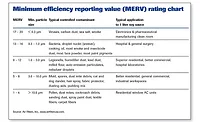Enhancing hygiene in your plant
Which program is right for you?
Food processors are very conscious of the need to ensure a sanitary environment on the processing floor. However, when it comes to hygiene programs, there is no such thing as “one size fits all.”
The considerations for a plant manufacturing ready-to-eat (RTE) meats, fish or dairy items are different from those for processors making low-acid canned foods or carbonated soft drinks. The type of program a processor develops depends upon many factors, including the product being manufactured; the age of the plant; and the real or perceived risk associated with its operation.
Among the options processors can consider to help ensure sanitary operations are:
- Handwash facilities
- Air-handling and ventilation systems
- Foot baths and/or boot washers
- Building design and construction
- Garments, gloves and hair restraints
Let’s start with handwash facilities. Workers who handle and prepare food prior to filling and sealing should be subjected to handwashing requirements. But what about those who work with filled containers? That depends on the facility layout. If everyone enters the process floor through the same doors and fans out to their posts, all workers should be required to wash their hands. However, if the different areas are segregated and have separate entrances, employees working with filled containers may be exempted from the handwashing requirement.
Not every plant needs to operate its processing floor under positive pressure using HEPA-filtered air. However, any company that makes RTE food should think seriously about it. Plus, a processor that handles dry ingredients that are allergens wants to be sure the area where these are dumped is under negative pressure, so the allergens are not spread around the plant. In addition, if a plant employs cleaning operations that generate steam or use hot water, it should have ventilation systems designed to remove excess moisture to eliminate condensate buildup and discourage the growth of Listeria monocytogenes.
Many people advocate foot baths and/or boot washers. These systems clean and sanitize the footwear of employees and visitors before they enter the processing floor. However, the systems also bring moisture into a facility, and operators must ensure the sanitizer levels are properly maintained.
Needless to say, how a plant is designed and maintained can affect food safety and quality. Years ago, the American Meat Institute created an expert panel with the mission of creating the basic principles of sanitary design for RTE products (see bit.ly/1PKvcMZ). Although these principles were developed for meats, they can help all processors minimize problems with cross-contamination and cross-contact.
As with other, previously mentioned factors, what plant workers should wear depends on the operation. Some plants put people into uniforms similar to those used in the semiconductor industry, while other food plants allow workers to wear street clothes and baseball caps. (Baseball caps are now deemed taboo, simply because they are often filthy.) The goal is to find a happy medium where workers are comfortable, yet the foods are protected.
Hair restraints should not be an issue, but they often are. Why? Companies create situations that require interpretation. For instance, instead of simply requiring employees to wear hairnets that completely cover all hair, including beards and moustaches, as well as the ears, some operations try to define situations where a moustache or beard does or does not necessitate protection. Instead, they should keep it simple: hairnet or no hairnet.
Look at what you do in your own food plant. Could things be done better?
In every food processing operation, no matter its size or the product it makes, there should be one constant—a commitment to continuous improvement. Consequently, finding—and maintaining—the correct system to ensure a sanitary environment on your processing floor is essential.
Looking for a reprint of this article?
From high-res PDFs to custom plaques, order your copy today!




